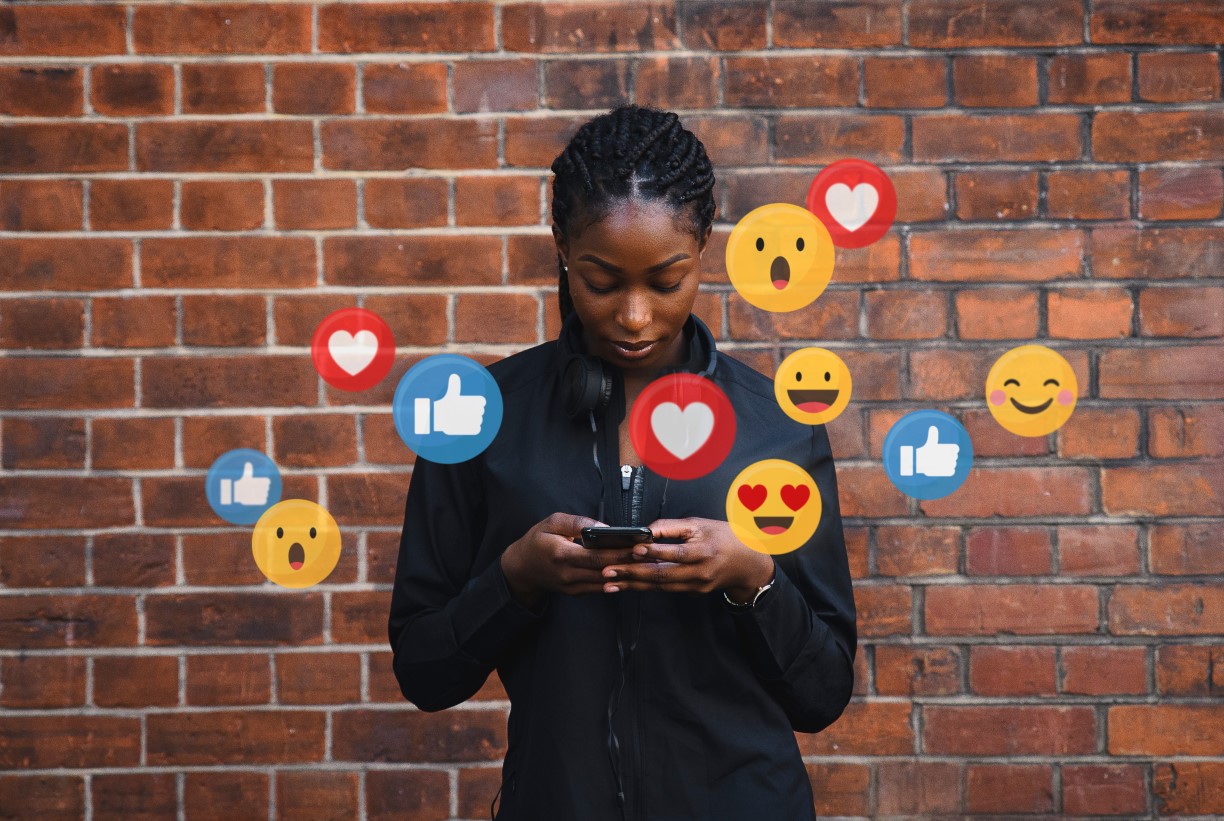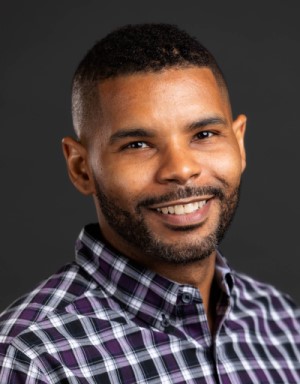
Why Social Media is a Source of Strength for Black Americans
The harmful effects of social media are as ubiquitous as the medium itself. Recent studies have linked the regular use of digital platforms with higher rates of anxiety and depression among both teens and adults; an increase in eating disorders among adolescent girls; a decline in cognitive function resulting from sleep disruptions; and diminished confidence in American democracy due to the proliferation of “fake news.”
Considering that an estimated 4.9 billion people worldwide, or roughly 60% of the entire global population, use social media — and for an average of 2 hours and 31 minutes every day — it’s clear that digital networks pose significant and serious risks to users’ physical and psychological health.

David Stamps doesn’t dispute social media’s harmful potential, but he believes the medium also has the capacity to educate, inspire and empower, particularly for Black Americans. Indeed, as the assistant professor of Information Design and Corporate Communication (IDCC) explains in research published in Journalism & Mass Communication Quarterly, “The existence of social media has allowed Black individuals to share their grievances, celebrate their successes, call attention to injustice and build awareness around cultural issues.”
Black Americans use social media more than any other racial group, Stamps says, and are also more likely to engage in online activism. A widely cited 2018 study from Nielsen, a media analytics firm, found that Black Americans — who constitute just 14% of the total U.S. population — account for 28% of all Twitter users. The platform has proven so popular among Black audiences, in fact, that it spawned “Black Twitter”: a community of like-minded users that exists within the larger digital network, linked via a hashtag (#BlackTwitter) and characterized by conversations about issues and experiences important to the Black community.
Black users are drawn to social media, Stamps explains, as a way of both circumventing and counterbalancing the overwhelmingly negative portrayals of their racial identity group in mainstream media. Traditional news outlets, he says, have a “sordid history of presenting disparaging depictions of Black identity” as “violent, threatening and in need of restraint.” These negative stereotypes and stigmatizing narratives — one example, he notes, is vilifying Black people as exclusive abusers of welfare and other subsistence programs — both reflect and perpetuate systemic racism in American society, and directly “influence race- and class-based policy decisions, hinder efforts toward racial equity, promote racial resentment and encourage group conflict.”
By contrast, social media offers Black Americans refuge from racist narratives. Platforms like Facebook, Twitter and YouTube, Stamps explains, function as the digital equivalent of “the barber shop, the church and the beauty salon,” providing virtual spaces where Black people can come together to celebrate and affirm their racial identities and “laugh with and love on one another.”
Digital networks also foster a greater sense of group vitality, which Stamps defines as “the degree to which a group is invested in change and aims to challenge biased attitudes and injustices.” In so doing, social media becomes a platform for encouraging collective action. Perhaps the best-known example of social media use to champion social justice is #BlackLivesMatter, a hashtag created by Black female activists Alicia Garza, Patrice Cullors and Opal Tometi in response to George Zimmerman’s 2013 acquittal in the shooting death of Trayvon Martin, a Black teenager.
In the decade since, the hashtag has been used to protest structural racism in law enforcement, as evidenced by the disproportionate number of deaths of unarmed Black men. Its use in response to the 2020 murder of George Floyd proved pivotal in bringing national attention to racial injustice and police brutality: a Pew Research Center report found #BlackLivesMatter appeared 47.8 million times on Twitter in the two week-period following Floyd’s death, while a New York Times analysis determined that widespread use of the hashtag helped sway public opinion in support of racial equity and criminal justice reform. Further, #BlackLivesMatter and social media platforms became vital tools for organizing the largest racial justice protests in the U.S. since the Civil Rights Movement of the 1950s and ’60s.
RELATED: Corporate Activism: True Allyship or “Woke-Washing”?
According to the New York Times, an estimated 15-26 million Americans defied COVID lockdowns to participate in one or more of the nearly 5,000 #BlackLivesMatter protests that took place during the month after Floyd’s murder. Though the majority of these protests were peaceful, media coverage focused on the handful of gatherings that devolved into rioting and violence. In earlier research, Stamps explored this “protest paradigm,” or how traditional media outlets rely on sensationalist coverage of social unrest that “problematizes the protesters and trivializes their positions through the characterization of these individuals as deviant and threatening.” It’s a calculated editorial decision, he says, that simultaneously reinforces social norms while “disadvantaging groups’ attempts at collective action.”
Social media platforms, however, allow users to directly challenge these biased narratives. In recent years, cell phone video cameras have captured and shared event footage, often in real-time, that offers audiences a more complete and nuanced picture — and, Stamps says, “holds people accountable for their actions.” The ability to share authentic, firsthand accounts of injustice has galvanized global audiences, amplifying awareness of and support for a variety of human rights issues.
Social media’s capacity to surmount geographical, cultural and even ideological barriers, Stamps says, is precisely why he finds the medium so exciting. In his view, other historically marginalized populations, both in the U.S. and worldwide, can benefit from following Black Americans’ digital “blueprint” for activism and advocacy, similarly leveraging social networking platforms to “build community and coalitions and create safe spaces that center and celebrate their racial identities.”

